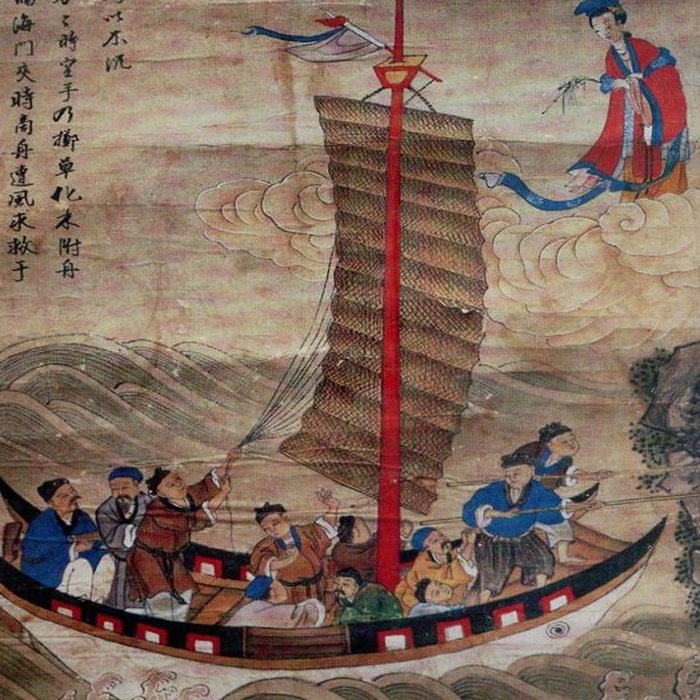Mazu: Chinese Goddess Of The Sea – Protector Of Fishermen
MessageToEagle.com – Mazu is the most worshiped sea goddess in China’s coastal areas, especially in the southeast and Taiwan islands.
Many people in China’s south-eastern coastal areas and Taiwan Island live by fishing. Fisherman’s life is tough, because he battles nature’s wildest elements to make a living.

Fishermen leave their homes and hope to safely return with a big catch every time they set out. Fishing from early in the morning or late in the evening, they sail on the turbulent sea, which is very dangerous.
It’s important that someone protects them and in fact, they strongly believe that Mazu – the goddess of the sea, is their protector.
The fishermen have created a sea goddess – “Heavenly Queen” – for blessing and protection.
Every year, on the 23rd day of the third lunar month, which is said to be the birthday of Mazu, fishermen go to the Mazu temple to worship the goddess with great piety instead of going fishing on the sea.
The image of Mazu depicts a lady wearing a crown and a dragon robe. On the Mazu Festival, some middle-aged and elderly women dress up in traditional style by wearing a flat hair coil, red coat and black pants and they burn incense to pay tribute to Mazu.

An ancient legend says that Moniang Mazu was the daughter of Lin Yuan, the superintendent of Fujian in the early Northern Song Dynasty.
Her name Moniang means “silent girl”, because she didn’t cry at birth. In her early teens, she began to burn incense and chant sutras. At the age of 16, she was given a bronze talisman by an immortal and she then achieved Taoist success and became an immortal herself. She performed a lot of magical feats. At 28, she ascended Meifeng Peak, where she became a divinity. After that, Moniang roamed across the country, rescuing and helping fishermen in distress at sea.
Solving troubles for the people, Mazu often appeared in the dream visions. People always saw her showing nearby the rocks and water holes, sitting on a dish covered with clouds and mist, or flying in red garment over the sea.
See also:
Legend Of The Candle Dragon That Could Lighten The Darkest Gate Of Heaven
Fin Folk – Mythical Amphibious Sea People On Orkney And Shetland
Jiangshi – Terrifying Ancient Chinese Vampire In Disguise
Local fishermen built a temple in Moniang’s hometown—Meizhou Island, to pay respect to her and worshiped her as “Mazu”.
China’s Yuan Dynasty (1271–1368) continued the maritime trading legacy of the Tang and Song dynasties and marine trade was developing fast. People living in Northern provinces also began to worship Mazu for safe sailing.
The worship of the goddess Mazu, a protective lady from the sea, began to spread to Southeast Asian nations. Mazu became the protection goddess of Chinese people in all countries.
According to statistics, there are over 0.2 billion Mazu worshipers across the world. The goddess is not only worshipped in coastal areas of Fujian and Taiwan, but also worshipped in overseas places inhabited by the Chinese, such as Southeast Asian nations and America’s Honolulu, where Mazu temples have been built.
Copyright © MessageToEagle.com This material may not be published, broadcast, rewritten or redistributed in whole or part without the express written permission of MessageToEagle.com
Expand for references









